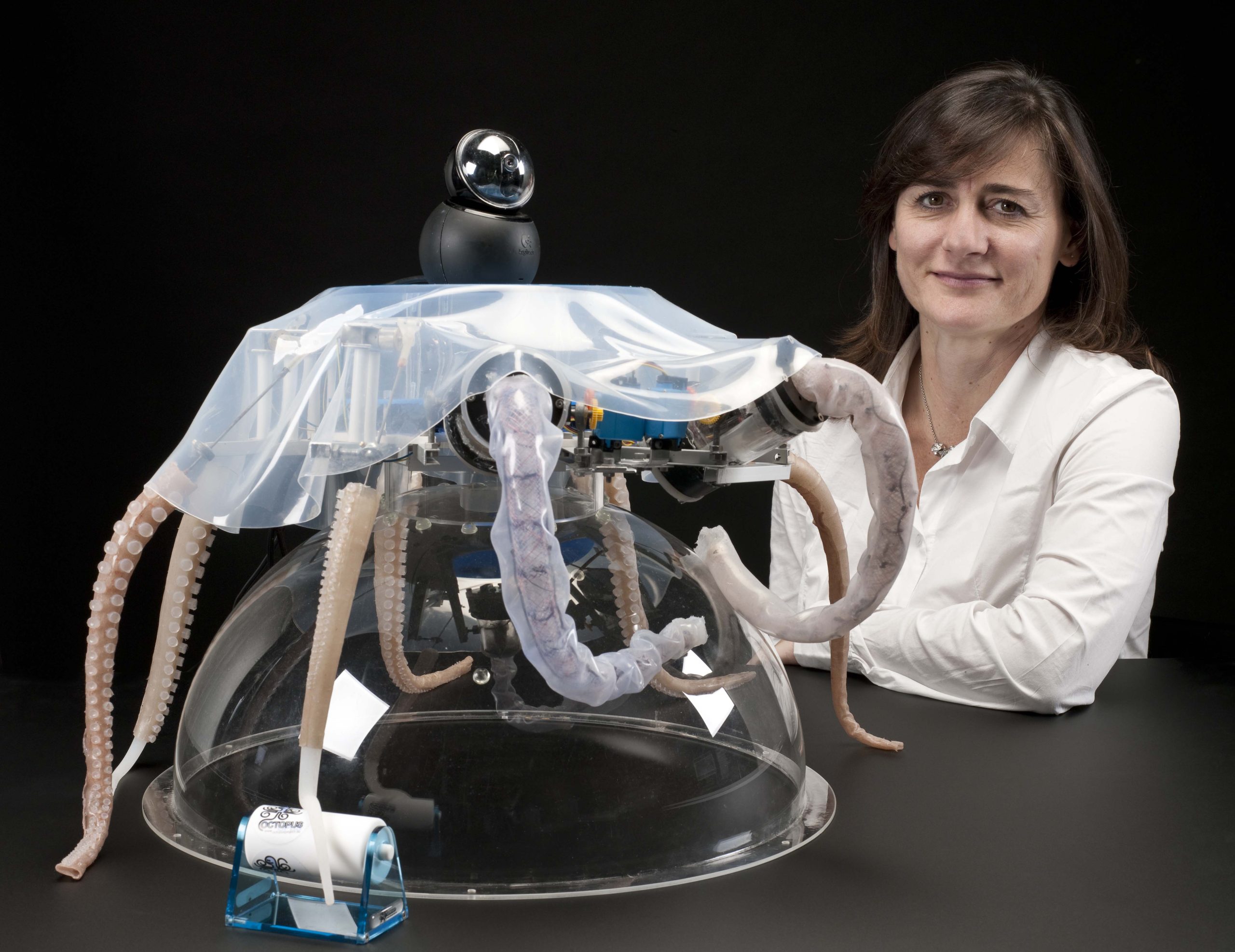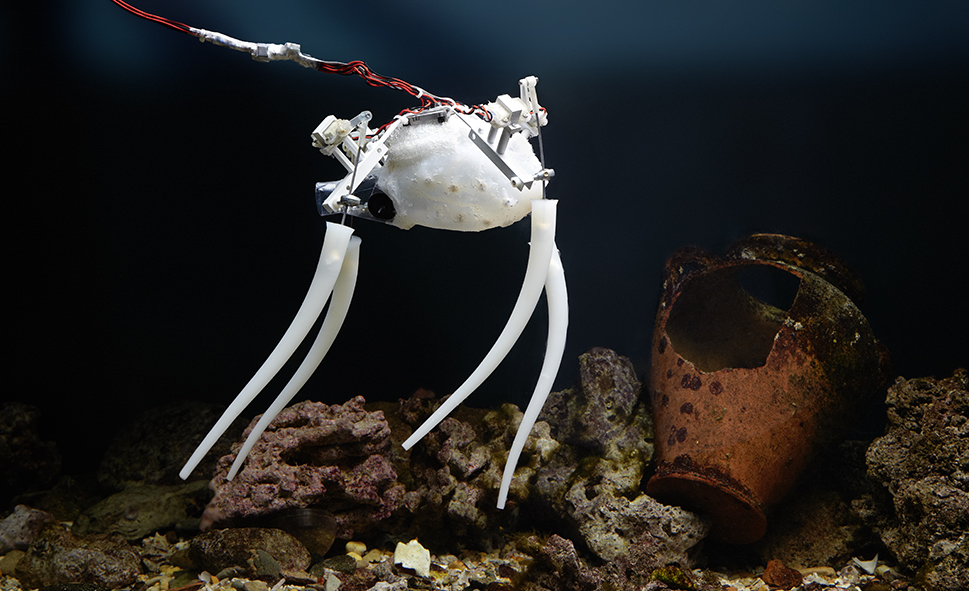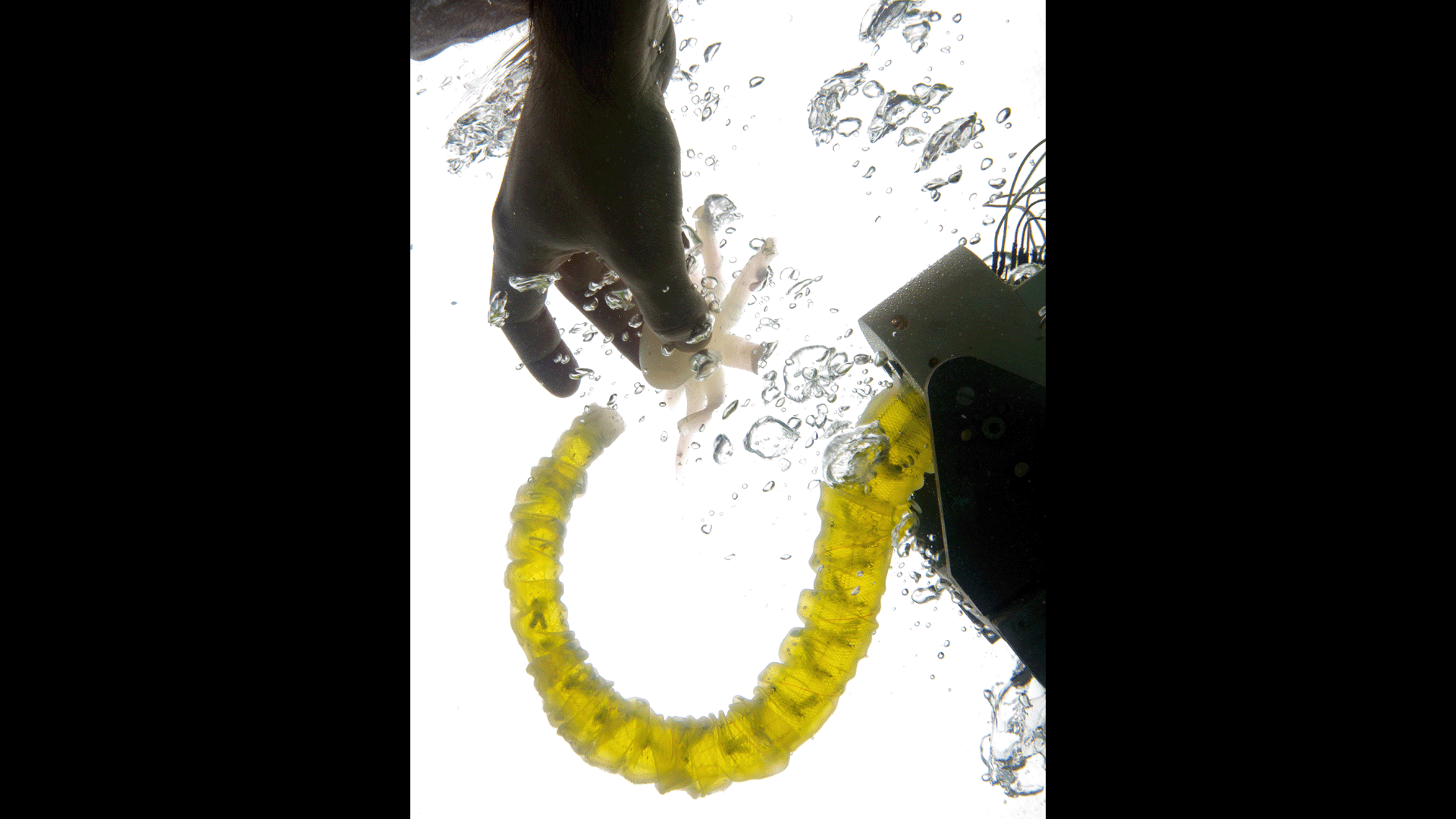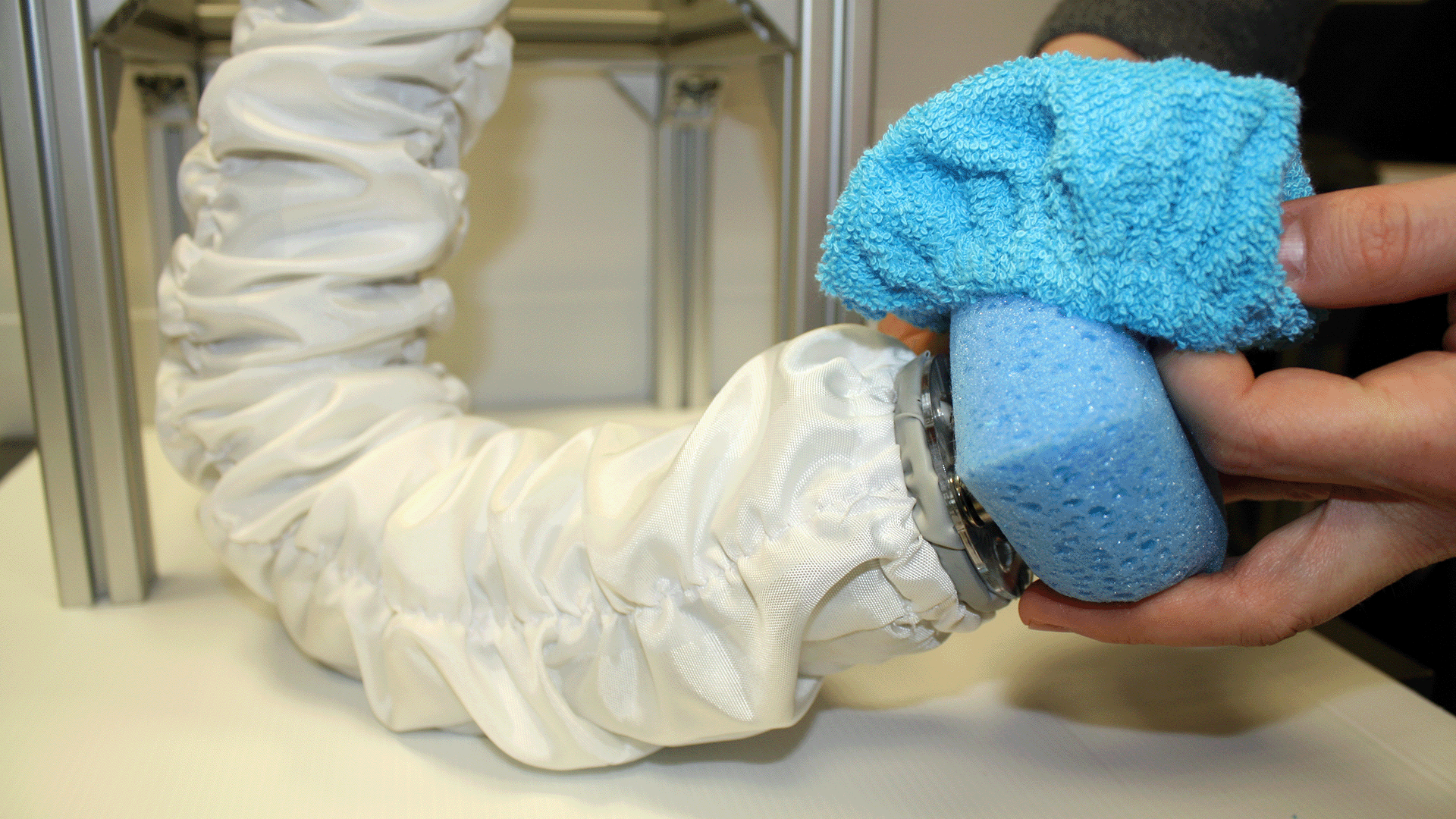
Professor Cecilia Laschi is a robotics professor at the College of Design and Engineering’s Department of Mechanical Engineering. In this Q&A she gives us some insights into her research in soft robotics and what motivates her work.
Q: What is soft robotics and what makes it an exciting area of research?
Think of a robot you’re familiar with – one from industry, or even from science fiction – then compare it with your pet or favourite animal. What’s the biggest difference you notice? Compared to robots, animals are soft and their movements are smooth.
Soft robotics is about building robots with soft materials. On the surface this seems quite straightforward, but it poses many new problems: What materials to use? How to make them move like organic muscles? What kind of control and intelligence is needed?
The aim is to produce robots able to do far more than the ones we are familiar with; robots that are adaptable in their movements and are capable of things like stretching, morphing, growing, self-healing or even biodegrading.

Q: How did you become interested in this field?
My interest in soft robotics came from studying a very special animal, the common octopus. It is completely soft with a very complex behaviour, being capable of manipulation, locomotion and swimming as well as extraordinary levels of intelligence which we are only just beginning to understand.
Studying and learning from the octopus is still my passion and I continue to devote a large part of my research to understanding its body and behaviour and how these can be applied to the development of robotics.
For example, the movement of the octopus’s arm to reach and grasp an object is very efficient and effective in water and I am studying them as a model for underwater manipulation in robotics.

Q: What aspects of soft robotics are you particularly interested in?
From my previous experience in neurorobotics, I’ve been especially interested in the application of learning in soft robots, through the use of neural networks, so that robots can learn their own movements and adapt to changes in their environment.
Underpinning much of my work in soft robotics is the idea of embodied intelligence. This is a concept, inspired by nature, centred on the understanding that the movements that we make are not only planned by our nervous system, but are executed mechanically by our physical body interacting with the world around us.
Applying embodied intelligence to robots made of advanced soft materials is what will really deliver the big leap forward in this research.

Q: In the next decade, what do you think will be the most exciting applications of soft robotics?
A lot of the current focus of soft robotics is in the biomedical field. For instance, soft robotics technologies can be applied to build soft endoscopes that navigate inside the human body for diagnosis or treatment.
Soft robots can also have a more effective interaction with patients in rehabilitation, as well as in personal assistance. I’m currently leading a team developing a soft robotic arm that can help elderly people and caregivers with their daily tasks.
But soft robotics has potential applications in many other industries that require more versatility in the manipulation of objects, such as in the food industry. Soft robots can also assist in manufacturing by reaching inaccessible or unergonomic positions, for instance in assembly tasks.
Above all, I think soft robotics offers huge potential. By adding new physical possibilities to digital technologies, it can help us in the most demanding, unpleasant or heavy tasks, while leaving the intellectual processes to human beings.
Q: What would be your advice to a student interested in a career in robotics?
Robotics is a fascinating multidisciplinary field. My advice to students is to follow your own attitude and passion, be open-minded to learn from many disciplines, to collaborate with others with different expertise, and to think out of the box.


![Cecilia Laschi 2012 Octopus Oriz 2048x1578[1]](https://cde.nus.edu.sg/me/wp-content/uploads/sites/11/2022/04/Cecilia-Laschi-2012-OCTOPUS-oriz-2048x15781-1-1024x789.jpg)

![[Business Times] Engineering Singapore’s green future](https://cde.nus.edu.sg/me/wp-content/plugins/websparks-news/assets/images/CDEinthenews3-1.png)